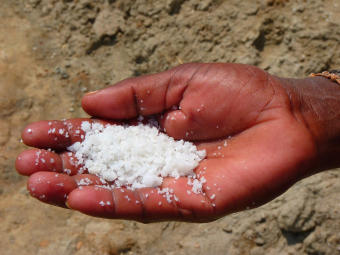
Difference Between Table Salt and Salts
Table salt, chemical name sodium chloride, is written NaCl. Yes, we call it salt and we sprinkle it on our food. It enhances flavor to the palate. But to the chemist, it is merely one of thousands – millions of salts. So what is a salt to a chemist?
It is one of two products (the other ordinarily water) of an acid-base reaction. Consider an example.
An Example of a Salt Formation
Calcium hydroxide plus sulfuric acid produces calcium sulfate plus water.
Ca(OH)2 + H2SO4 → CaSO4 + 2 H2O
The above reaction features calcium as Ca (+2), hydrogen as H (+1), oxygen as O (-2), and sulfate as SO4 (-2). The number of atoms (as well as the charge) balance.
The above reaction is of interest. Slaked lime plus sulfuric acid yields calcium sulfate (Plaster of Paris) plus water. The salt is the Plaster of Paris. Don’t sprinkle it on your food. Most salts are not well-suited for human consumption.
Back to Table Salt
So if table salt is also a salt according to the chemists’ use of the word, does it undergo such a reaction pattern? Yes, it does. The reaction is simply written
NaOH + HCl → NaCl + H2O
An Added Tidbit
Interestingly, the salt produced in reactions such as the above is more nearly neutral than either the acid or the base used to produce it. In fact, table salt is pretty well neutral. Don’t look for salt to produce heartburn when you consume it. Simply enjoy the flavor enhancement. Unless, that is, health issues dictate you avoid it.
Note: You might also enjoy Convert Milligrams Sodium into Teaspoons Salt
References: